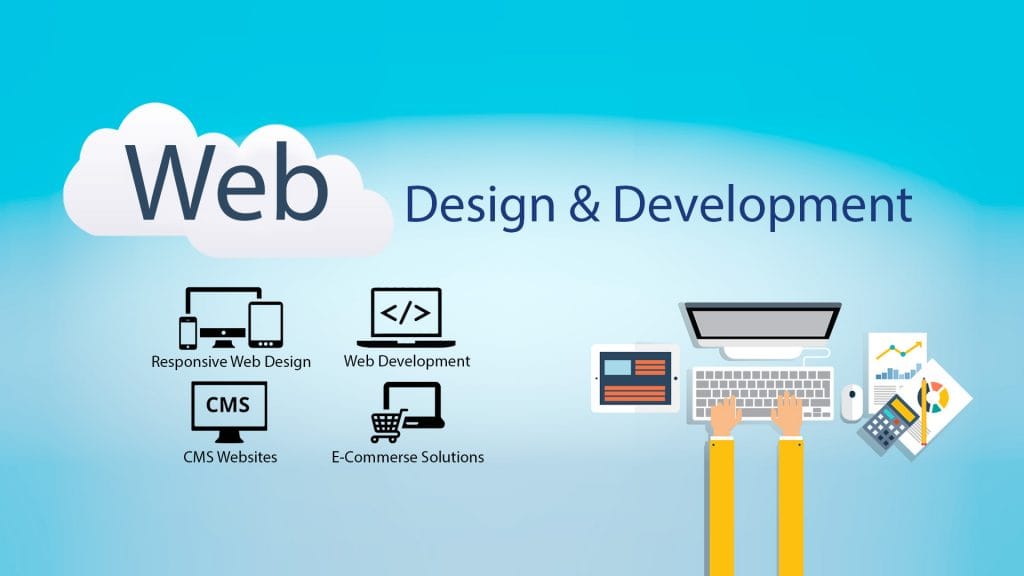Understanding the Difference Between Website Design and Website Development
Understanding the Difference Between Website Design and Website Development
Blog Article

While the terms "website design" and "website development" are used somewhat interchangeably, each actually describes a distinct component of building a site. They are both important to the construction of a fun, useful, and visually appealing site, but they serve two distinct areas of website creation. Let's break down each role and the skills they encompass to understand their differences and how they work together to form a cohesive site.
1. What is Website Design?
Web design mainly deals with aesthetics and user experience of a site. That is, how to give it an attractive look, structure pages, and make it visually pleasing and intuitive. Several elements comprise web design: layout, colour schemes, typography, and images.
Key Elements of Web Designing
User Experience (UX) Design: Here, the focus would be on ensuring that the experience of the user is perfect and unhurried in going through the site. In brief, for easy navigation, the design of UX should set within logical page flows so that ease of use becomes ubiquitous on every device.
User Interface (UI) Design: UI design is even more concerned with the look of the site and the way people interact with the separate elements. The process includes designing the buttons, icons, and other on-screen elements so that they may appear attractive and even user-friendly.
Visual Design: Visual designers concentrate on aspects like colour schemes, layout aesthetics, typography, and branding consistency. They make sure that the site aligns with the brand identity and is visually compelling.
Abilities Necessary for Webpage Creation
Graphic Designing Software: A considerable percentage of designers have access to and use creative programmes such as Adobe Photoshop and Illustrator, Figma, and Sketch, among others, to design and present their ideas as pictures or layouts.
Basic HTML/CSS: Web designers are generally not required to code. Nevertheless, it helps to possess some knowledge of HTML and CSS since these two languages describe the limits and scope of what the designer has to work with.
UX/UI Principles: A competent website designer must understand the principles of user-centred design, which is essential in ensuring the creation of an appropriate website structure.
2. What is Website Development?
Other than that, website development is the actualization of the site design. Here, the visual layouts designed by the experts are put into code and program mode and actualized to result in a fully functional site. Websites are developed in two primary categories: front-end development and back-end development.
Salient Features of Website Development
Front-end development is coding those visual parts of the site which can be directly accessed by users. It's being done with the help of HTML, CSS, and JavaScript, elements include forms, buttons, navigation, general layout etc. A front-end developer fills in that gap where the design needs to join back-end functionality.
Back-End Development: Writing code for the server and database along with the application. The actual functionality happens here. The languages that a back-end worker would use include PHP, Python, Ruby, Node.js, etc. for managing user authentication, data storage, or just plain other functions about the server.
Full-Stack Development: A full-stack developer has the abilities in the front-end and back-end and can be engaged to handle the development of a whole site on all aspects. They start their work from developing visual elements to operating databases and the server's logic.
Website Development Skills
Programming Languages: A number of primary languages are used within web development like HTML, CSS, JavaScript, PHP, Python, and SQL.
Database Management: Developers need to understand how to work with several databases like MySQL, MongoDB etc., to handle data proficiently.
Frameworks and Libraries: Developers often tend to use front-end frameworks like React, Angular, and Vue.js to write the codes that can bring functionality very easily, as well as Django, Laravel, or Express.js for the back-end to help in developing functionality-friendly approaches.
3. How Website Design and Development Go About Together
Website design and development are two different processes, but they are very much dependent on each other to ensure a harmonious site is ultimately delivered. Here's how they intersect:
Design-to-Development Handoff: In this process, the designers will build up a visual prototype of the site in a tool like Figma, Adobe XD, etc. that can then be passed off to the developers to take those prototypes as blueprints upon which to begin building code.
Responsive Design: In responsive design, both designers and developers need to keep this aspect in mind so that the site works well on different sizes of screens. Designers make flexible layouts and use coding techniques to make these flexible layouts responsive to the developers.
Usability and Functionality: The concern of designers is with the "look and feel," but a developer is concerned about functionality. Both designers and developers have to take care of usability so that this site not only has visual appeal but also functionality and user-friendliness.
4. Key Differences Between Website Design and Development
| Aspect | Website Design | Website Development |
|---|---|---|
| Focus | Visual appeal, user experience | Functionality, performance, server-side processing |
| Skills | Graphic design, UX/UI principles, basic HTML/CSS | Programming (HTML, CSS, JavaScript, backend languages) |
| Output | Mockups, layouts, prototypes | Functional websites, databases, APIs |
| Tools | Figma, Photoshop, Illustrator | VS Code, Git, debugging tools |
| Goal | To make the website look appealing and intuitive | To make the website operational and efficient |
Conclusion
There are two principal aspects which contribute to the creation of an efficient website, being design and development. The first is concerned more with aesthetic functions, while the second attends to the technical functionality and performance of the site. The design and development teams co-work with each other, exchanging knowledge freely to achieve maximum results great look, feel, and usability along with good function performance rounds up all the above arguments. Report this page